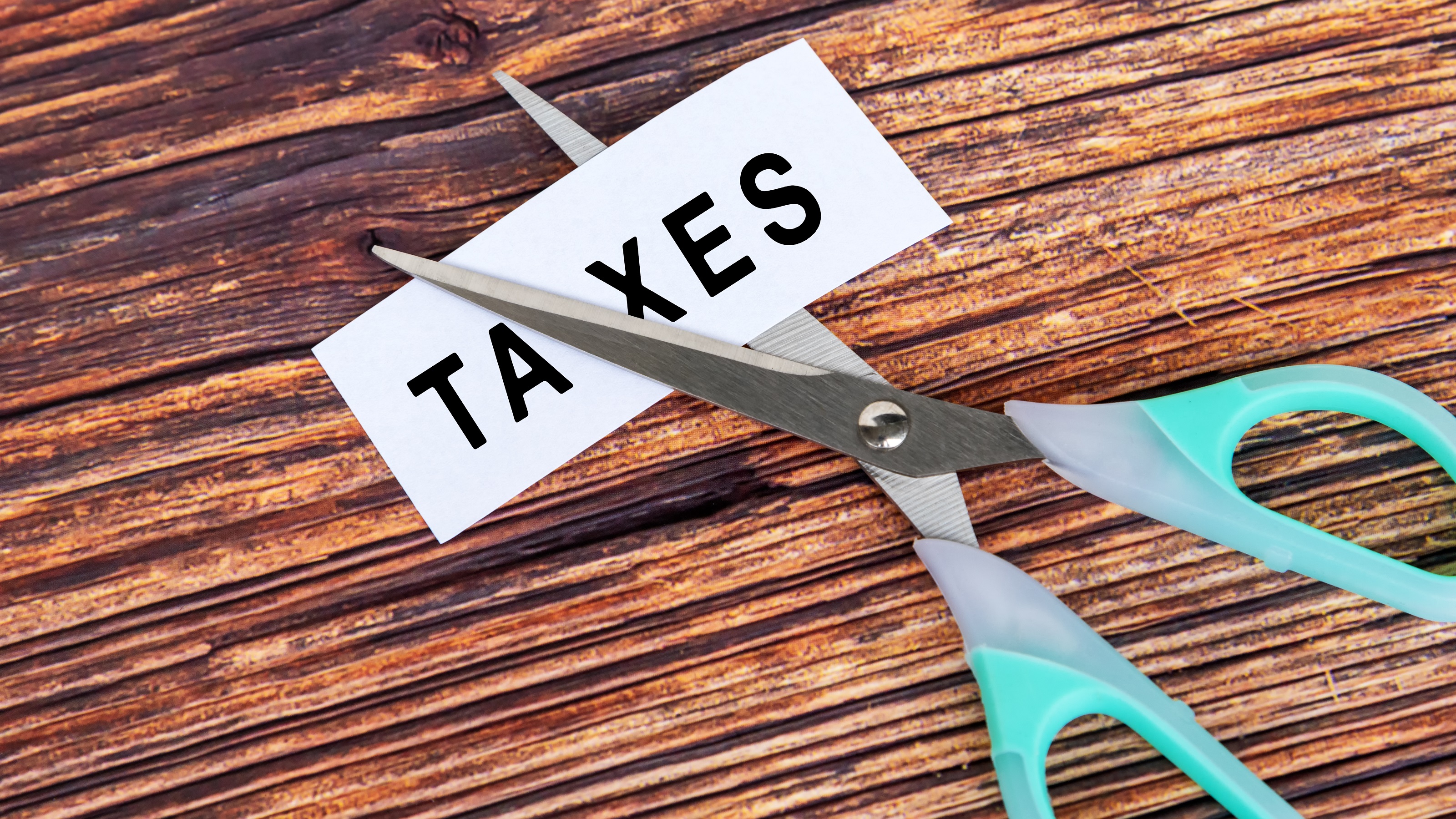Three Ways to Reduce Taxes on Your Investment Earnings
Proactive tax planning using these strategies could help you keep more of your hard-earned money, now and in the future.


When it comes to investing and growing wealth to secure your financial future, it isn’t how much you make that matters most — it’s how much you keep. And yet, investors often overlook the critical role tax efficiency can play in successful retirement planning.
The strategic management of your investments can help you minimize what you owe, maximize what you earn (and hold on to) and build a nest egg that will last longer for you and your heirs. But it takes proactive planning to make it work. This isn’t something you can wait until each year’s tax season to worry about and maybe try to play catch-up. Proper tax planning means looking at the big picture, assessing your goals and finding opportunities to reduce your tax burden for the short and long term.
With that in mind, here are three moves that could help you lower your tax bill — and keep more of your hard-earned money — now and in the future.
From just $107.88 $24.99 for Kiplinger Personal Finance
Become a smarter, better informed investor. Subscribe from just $107.88 $24.99, plus get up to 4 Special Issues

Sign up for Kiplinger’s Free Newsletters
Profit and prosper with the best of expert advice on investing, taxes, retirement, personal finance and more - straight to your e-mail.
Profit and prosper with the best of expert advice - straight to your e-mail.
1. Consider a Roth conversion.
One of the most powerful tools for tax-efficient investing is the Roth IRA, which offers several advantages in retirement. While contributions to a Roth account are made with after-tax dollars — so you don’t get the upfront tax savings that other retirement accounts can offer — the earnings in a Roth grow tax-free, and qualified withdrawals are tax-free as well.
If you’ve been putting most of your retirement savings into a tax-deferred investment account — such as a traditional IRA or 401(k) — converting all or a portion of those funds to a Roth could go a long way toward reducing your future tax bills.
Of course, you’ll have to pay taxes on any money you convert in the year you convert it, so you’ll want to be cautious with your withdrawals and keep an eye on your tax bracket. But the benefits of a Roth are many, including:
- There are no required minimum distributions (RMDs), so you can keep growing the money in your account for as long as you like.
- Qualified withdrawals from a Roth IRA don't count toward the modified adjusted gross income (MAGI) threshold that’s used to determine the Medicare surtax.
- A Roth IRA can provide more flexibility when it comes to paying taxes in retirement. You can use it in combination with a tax-deferred account, for example, to manage your tax liability from year to year.
Another plus: When you pass down a Roth IRA to your heirs, they, too, can enjoy tax-free growth.
Let’s say you have a traditional IRA with a substantial balance, and you convert a portion of those funds to a Roth IRA over time. Your heirs can wait up to 10 years after your death to withdraw their money, and during that time, the money can continue to grow. The Rule of 72 tells us if the annualized return is greater than 7.2%, the inherited Roth IRA could even double in that 10-year period.
2. Make the most of charitable giving with a donor-advised fund.
If you like the idea of donating to charity, and you want to include it in your planning, there are several strategies that can offer a substantial tax break in the process. Among the most popular options is a donor-advised fund (DAF).
A DAF is like an investment account, only it’s designed specifically to grow money for charitable giving. Its benefits are twofold:
- Using the DAF, you can “stack” multiple years’ worth of donations into one large donation (cash and/or assets) that puts you over the Tax Cuts and Jobs Act threshold for itemizing your charitable deductions in one year. This provides an immediate tax deduction.
- The DAF’s sponsoring organization then invests that money. It can continue to grow tax-free until it’s paid out tax-free over time to qualifying charitable causes. The DAF’s sponsoring organization has legal authority over the assets in your fund, but as the “donor adviser,” you still can have some say in how the money is invested as well as which charities receive donations and when.
With a DAF, you can maintain your commitment to charitable giving while optimizing your tax savings, both in the current year and throughout your lifetime.
3. Reduce capital gains taxes with loss harvesting.
It’s natural to root for the winners in your portfolio — but sometimes investments that are losing value can still do some good for your bottom line.
With a strategy called tax-loss harvesting, you can sell long-term positions that have produced capital losses, replace them with similar but not identical investments and then use that loss to offset the taxes on realized investment gains from the same year. If your losses exceed your gains, you can even use the excess to offset up to $3,000 of ordinary income each year, with any remaining losses carried forward to future years.
By implementing this strategy regularly to help minimize your tax bills, you can keep more of your money invested longer, so it stays working for you.
Proactive planning is key
Strategies like Roth IRA conversions, donor-advised funds and tax-loss harvesting can help you reduce taxes during your lifetime and leave a tax-efficient legacy for your heirs. And if you can combine one or more strategies, you could further bolster your savings. (For example, the income tax deduction on a DAF contribution could be used to offset the increased tax liability from a Roth conversion.)
You’ll likely need some help, however, to make sure you’re getting the most out of your investments and that you’re following IRS rules. By consulting with a financial adviser or tax professional, you can tailor these tax-saving strategies to your unique financial situation and improve your chances of achieving your family’s goals.
Kim Franke-Folstad contributed to this article.
Appearances in Kiplinger were obtained through a PR program. The columnist received assistance from a public relations firm in preparing this piece for submission to Kiplinger.com. Kiplinger was not compensated in any way.
Related Content
- These Energy ‘Middlemen’ Are an Income Lover’s Dream
- Five Downsides of Investing in Alternatives
- Do You Have at Least $1 Million in Tax-Deferred Investments?
- The Four Headwinds of Retirement and How to Combat Them
- Nervously Nearing Retirement? Four Do’s, Four Don’ts and One Never
Profit and prosper with the best of Kiplinger's advice on investing, taxes, retirement, personal finance and much more. Delivered daily. Enter your email in the box and click Sign Me Up.

David McGill is president of Comprehensive Financial Consultants, which he founded in 1998. He is an Accredited Investment Fiduciary (AIF®) and a financial professional who can offer both investment advice and insurance products. McGill has passed the Series 7, 24, 63 and 65 securities exams and has life, health and annuity insurance licenses.
-
 My Retirement Learning Curve, 1 Year In
My Retirement Learning Curve, 1 Year InA retiree checks in with what they wish they knew early on and what they've changed about their plan one year in.
-
 Introducing Your CD's Edgier Cousin: The Market-Linked CD
Introducing Your CD's Edgier Cousin: The Market-Linked CDTraditional CDs are a safe option for savers, but they don't always beat inflation. Should you try their counterparts, market-linked CDs, for better returns?
-
 'Humbug!' Say Consumers, Despite Hot GDP: Stock Market Today
'Humbug!' Say Consumers, Despite Hot GDP: Stock Market Today"The stock market is not the economy," they say, but both things are up. Yet one survey says people are still feeling down in the middle of this complex season.
-
 Introducing Your CD's Edgier Cousin: The Market-Linked CD
Introducing Your CD's Edgier Cousin: The Market-Linked CDTraditional CDs are a safe option for savers, but they don't always beat inflation. Should you try their counterparts, market-linked CDs, for better returns?
-
 How to Protect Yourself and Others From a Troubled Adult Child: A Lesson from Real Life
How to Protect Yourself and Others From a Troubled Adult Child: A Lesson from Real LifeThis case of a violent adult son whose parents are in denial is an example of the extreme risks some parents face if they neglect essential safety precautions.
-
 To Build Client Relationships That Last, Embrace Simplicity
To Build Client Relationships That Last, Embrace SimplicityAs more automation becomes the norm, you can distinguish yourself as a financial professional by using technology wisely and prioritizing personal touches.
-
 Client Demand Is Forcing Financial Advisers to Specialize: How to Deliver
Client Demand Is Forcing Financial Advisers to Specialize: How to DeliverThe complexity of wealthy clients' needs — combined with AI and consumer demand — suggests the future of financial planning belongs to specialized experts.
-
 A Financial Planner Takes a Deep Dive Into How Charitable Trusts Benefit You and Your Favorite Charities
A Financial Planner Takes a Deep Dive Into How Charitable Trusts Benefit You and Your Favorite CharitiesThese dual-purpose tools let affluent families combine philanthropic goals with advanced tax planning to generate income, reduce estate taxes and preserve wealth.
-
 A 5-Step Plan for Parents of Children With Special Needs, From a Financial Planner
A 5-Step Plan for Parents of Children With Special Needs, From a Financial PlannerGuidance to help ensure your child's needs are supported now and in the future – while protecting your own financial well-being.
-
 How Financial Advisers Can Best Help Widowed and Divorced Women
How Financial Advisers Can Best Help Widowed and Divorced WomenApproaching conversations with empathy and compassion is key to helping them find clarity and confidence and take control of their financial futures.
-
 A Wealth Adviser Explains: 4 Times I'd Give the Green Light for a Roth Conversion (and 4 Times I'd Say It's a No-Go)
A Wealth Adviser Explains: 4 Times I'd Give the Green Light for a Roth Conversion (and 4 Times I'd Say It's a No-Go)Roth conversions should never be done on a whim — they're a product of careful timing and long-term tax considerations. So how can you tell whether to go ahead?